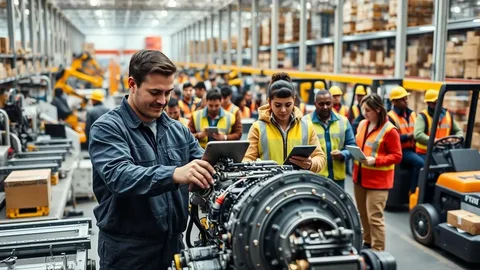The Digital Shift: Inside the Growing US Automotive E-Commerce Market

Introduction
The US Automotive E-Commerce Market has rapidly transformed the way consumers and businesses purchase automotive parts, accessories, and services. With the rise of digitalization and growing consumer preference for online convenience, the automotive industry is witnessing a fundamental shift from traditional dealership sales to online platforms. From spare parts and tires to car care products and tools, e-commerce has revolutionized the automotive supply chain, offering faster delivery, competitive pricing, and wider accessibility. Supported by strong logistics networks and digital payment systems, the US automotive e-commerce market continues to expand, shaping the future of how vehicles are maintained, upgraded, and accessorized.
Market Drivers
Several factors drive the strong growth of the US Automotive E-Commerce Market. The increasing adoption of smartphones and digital platforms has made online purchasing more accessible to both consumers and workshops. Rising vehicle ownership and the growing average age of vehicles—now over 12 years in the US—are pushing demand for replacement parts and maintenance components. Online platforms like Amazon, eBay Motors, AutoZone, and RockAuto have become major players, offering a vast catalog of OEM and aftermarket products. The availability of advanced search tools, compatibility checks, and same-day delivery options has enhanced consumer confidence in online automotive shopping. Furthermore, digital marketing and influencer-driven promotions are helping brands connect directly with customers, bypassing intermediaries and boosting profitability.
Market Challenges
Despite impressive growth, the market faces notable challenges. Counterfeit and low-quality parts sold online remain a concern, leading to safety issues and customer mistrust. Supply chain disruptions, particularly during global crises, can delay deliveries and affect consumer satisfaction. Managing product returns and ensuring accurate part compatibility across multiple car models require strong data integration and logistics precision. The highly competitive pricing environment pressures retailers to maintain slim margins. Additionally, many customers still prefer physical inspection before purchasing critical components like engines or tires, limiting online penetration in some product categories. Cybersecurity risks and data privacy issues associated with digital transactions also pose operational challenges for online retailers and consumers alike.
Market Opportunities
The US Automotive E-Commerce Market offers immense opportunities with technological integration and digital service expansion. Artificial intelligence and machine learning are being used to enhance product recommendations, inventory management, and customer personalization. Augmented reality (AR) tools are emerging as powerful aids, enabling users to visualize parts on their vehicles before purchase. The expansion of B2B e-commerce platforms for garages, repair shops, and fleet operators presents a massive untapped opportunity. Subscription-based models, online diagnostics, and doorstep installation services are gaining traction. The growth of electric vehicles (EVs) opens a new category for specialized e-commerce sales, including batteries, charging accessories, and EV-specific components. Additionally, sustainability-conscious consumers are driving interest in refurbished and eco-friendly automotive parts sold online.
Regional Insights
Regionally, the US Automotive E-Commerce Market shows strong growth in urban and suburban areas where internet penetration and logistics infrastructure are most advanced. States like California, Texas, Florida, and New York lead in e-commerce transactions due to high vehicle ownership and dense populations. The Midwest, with its strong automotive manufacturing base, also contributes significantly to B2B e-commerce activity. The South and Southeast regions are witnessing rising online purchases due to expanding logistics networks and the increasing adoption of mobile shopping platforms. Rural areas are gradually catching up as faster delivery options and wider product availability reduce the traditional dependency on local auto stores.
Future Outlook
The future of the US Automotive E-Commerce Market is firmly anchored in technological innovation, customer experience, and integrated logistics. AI-driven predictive analytics will help consumers anticipate part replacements and automate purchases. Blockchain technology could enhance transparency in part authenticity, ensuring customers receive genuine products. Same-day delivery and warehouse automation will continue to improve logistics efficiency, setting new standards for online convenience. The increasing adoption of EVs will diversify the e-commerce ecosystem, introducing new categories and service models. Collaborations between e-commerce platforms, OEMs, and logistics providers will create seamless customer experiences. With consumers becoming more digitally literate and value-oriented, the market is expected to maintain double-digit growth in the coming years.
Conclusion
In conclusion, the US Automotive E-Commerce Market stands at the intersection of technology, convenience, and transformation. As digitalization accelerates, online automotive retailing is becoming an integral part of the industry’s value chain. Although challenges like counterfeit parts and data security persist, advancements in AI, blockchain, and AR are poised to overcome them. The growing shift toward EVs and sustainable parts further strengthens the sector’s outlook. Ultimately, automotive e-commerce is not just reshaping buying habits—it’s redefining customer engagement, supply chain efficiency, and the overall automotive retail experience in the United States.




